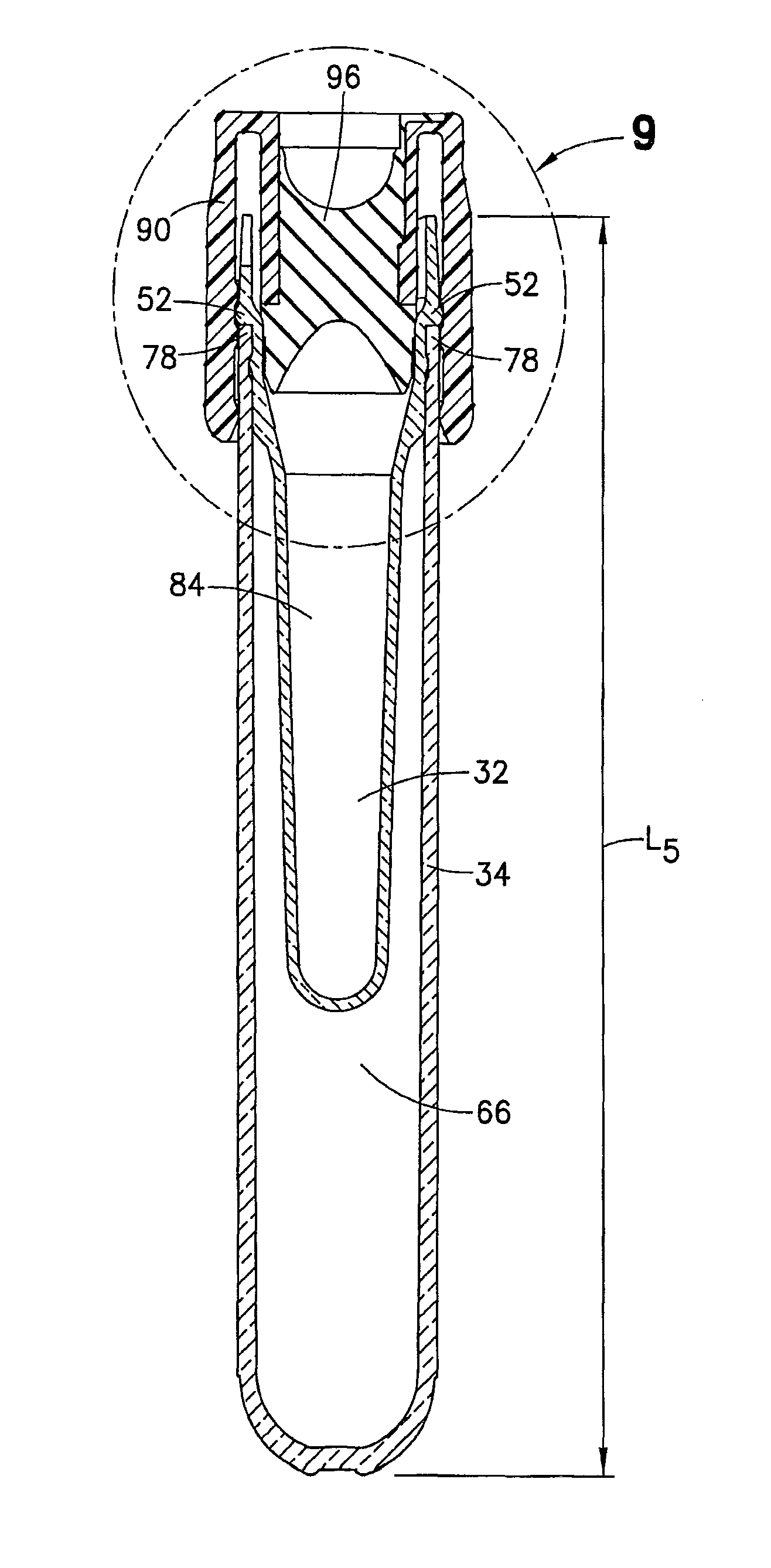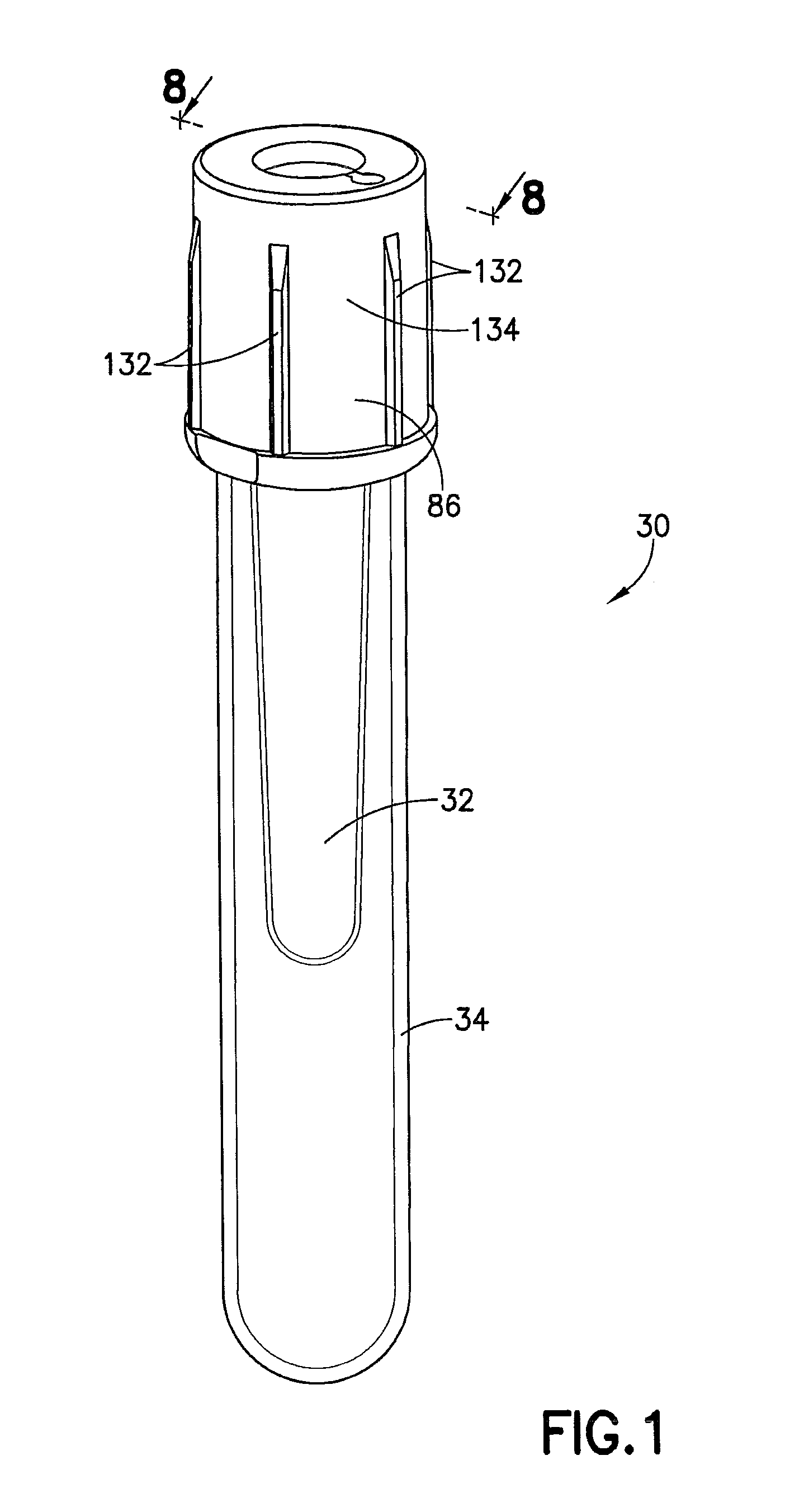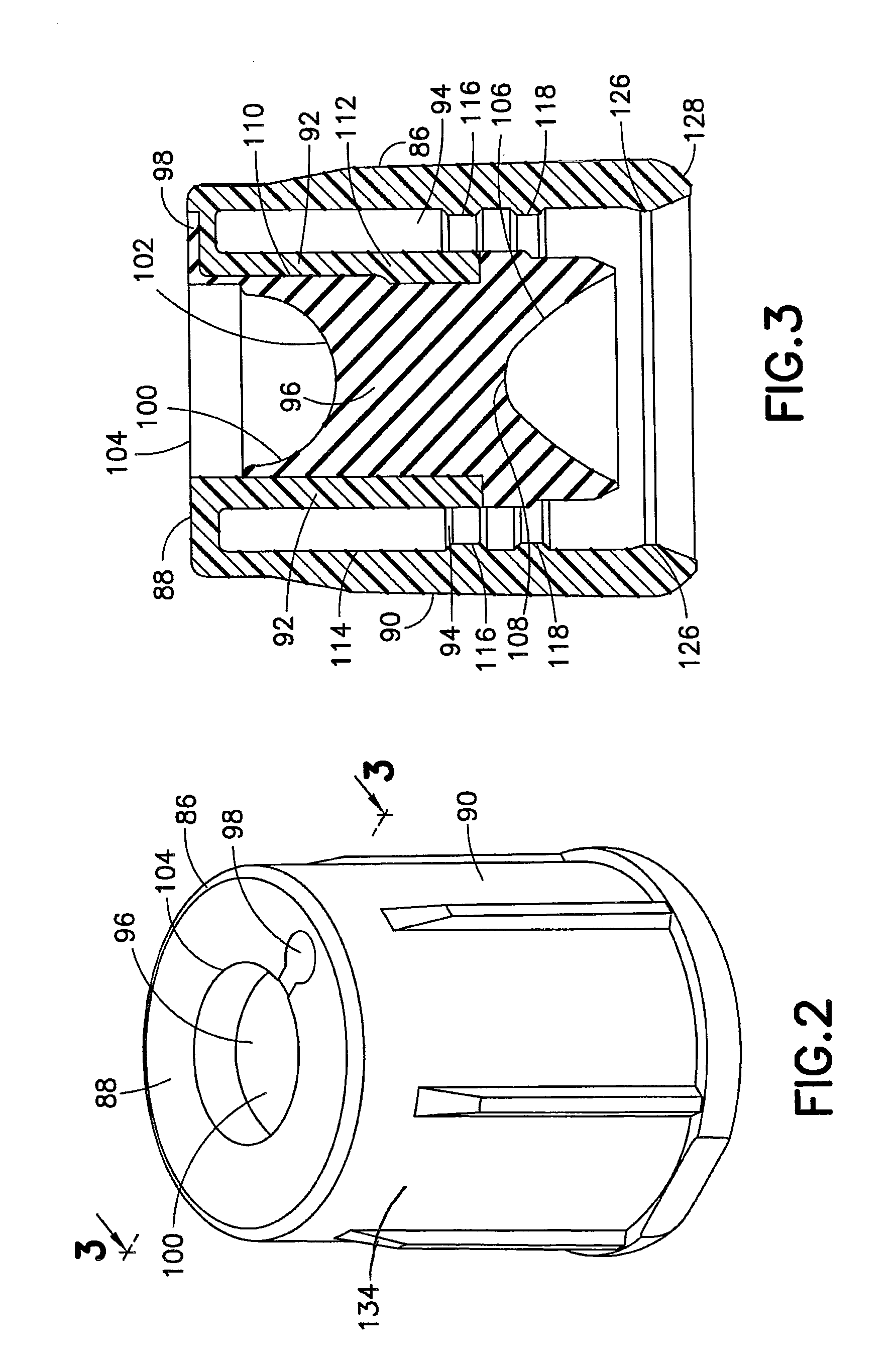Specimen collection container assembly
a technology for specimen collection and container assembly, which is applied in the field of specimen collection container assembly, can solve the problems of many conventional capillary specimen collection containers that are not compatible with automated front end processes used to prepare specimens, many conventional capillary specimen collection containers that are not dimensioned to accommodate, and many conventional capillary specimen collection containers that are not compatible with automated analysis procedures and other issues, to achieve the effect of maintaining the sterility of the interior and improving the sealing mechanism
- Summary
- Abstract
- Description
- Claims
- Application Information
AI Technical Summary
Benefits of technology
Problems solved by technology
Method used
Image
Examples
Embodiment Construction
[0038]As shown in FIG. 1, a specimen collection container assembly 30, such as a biological fluid collection container, includes an inner tube 32, an outer tube 34, and a specimen cap 86. The inner tube 32, as shown in FIGS. 4-5, is used for the collection and containment of a specimen, such as capillary blood or other bodily fluid, for subsequent testing procedures and diagnostic analysis. The outer tube 34, as shown in FIGS. 6-7, acts primarily as a carrier for the inner tube 32, providing additional protection for the contents of the inner tube 32 as well as providing external dimensions that are compatible with standard automated clinical laboratory processes, such as Clinical Laboratory Automation. The specimen cap 86, as shown in FIGS. 2-3, provides a means for a user to access the inner tube 32 to obtain the specimen deposited therein, and also provides a leak proof seal with the inner tube 32 upon replacement of the specimen cap 86, as will be discussed herein.
[0039]Referrin...
PUM
 Login to View More
Login to View More Abstract
Description
Claims
Application Information
 Login to View More
Login to View More - R&D
- Intellectual Property
- Life Sciences
- Materials
- Tech Scout
- Unparalleled Data Quality
- Higher Quality Content
- 60% Fewer Hallucinations
Browse by: Latest US Patents, China's latest patents, Technical Efficacy Thesaurus, Application Domain, Technology Topic, Popular Technical Reports.
© 2025 PatSnap. All rights reserved.Legal|Privacy policy|Modern Slavery Act Transparency Statement|Sitemap|About US| Contact US: help@patsnap.com



